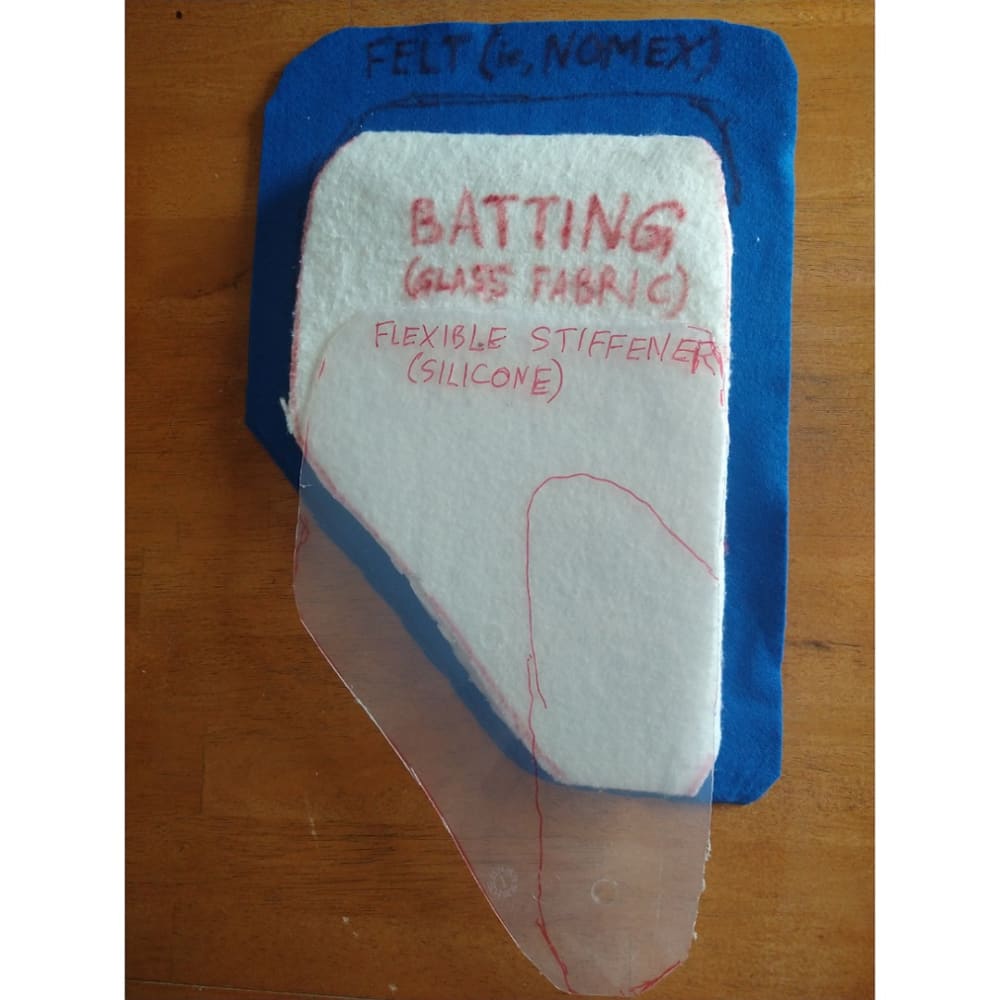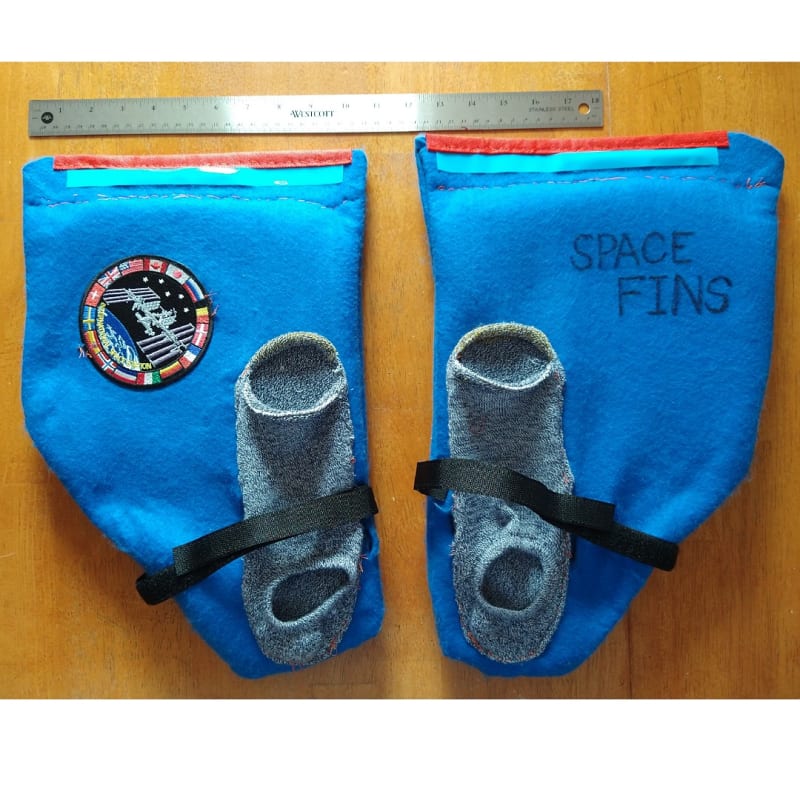Hands free human-powered propulsion in weightlessness inside a pressurized spacecraft is possible, wearing a pair of soft slippers shaped like a diver's swim fins.
Since the cramped cockpits of early space missions, crew cabins have grown in volume. The Skylab station was so large crew somersaulted through its airy center.
It is time consuming and a safety risk to push one's way end to end of a large space complex. Given fire or decompression, seconds count to navigate to the nearest hatchway for escape.
Astronauts twist, roll, repel off or drift in their chosen direction, or use their feet to kick like a swimmer, in air rather than water. But their feet have little surface area to displace the air, even getting "stuck" in midair.
Space Fins are compact and stiffened internally to function like a swim fin in the air. They are wearable all day like a pair of bedroom slippers. Feet are inserted through soft straps or a sock, held securely but comfortably.
Prototype made of craft felt; quilt batting; plastic sheet; socks; Velcro straps and steel weight rods (Figure One). Glow tape stripes allow crew to locate each other in the dark. LED lights may also be attached.
Each fin is sixteen inches long, eleven inches wide, one inch thick and are 0.7 pounds weighted.
For fire safety, fins can be of Nomex felt, batting of glass fabric and flexible core of silicone (Figure Two).
Video demonstrates fins displacing room air to turn a pinwheel. Test suggests blades of fins should flap up and down with sharp kick strokes. Blade edges are weighted to ensure flapping. Core is springy. Blades can be articulated. Use all rubber variant for pool training.
Space Fins allow quick travel, maneuvering and positioning of oneself inside of a spacecraft.
Video
Like this entry?
-
About the Entrant
- Name:Leonard J Holmin
- Type of entry:individual
- Patent status:none





